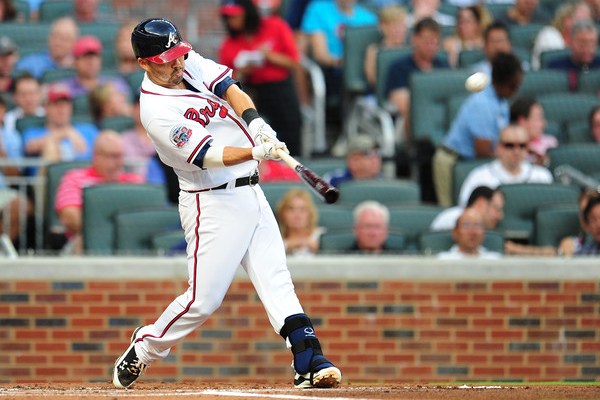
Atlanta re-signed C Kurt Suzuki to a one year, $3.5M extension over the weekend. It will keep the backup catcher in uniform for the 2018 season, providing the team with some positional certainty while giving Suzuki a $2M raise. After picking up Tyler Flowers’ option in the offseason, Atlanta won’t have to worry about the catcher position during the offseason.
A year ago, this seemed unlikely, because Kurt Suzuki was coming off a stretch of really bad seasons. Suzuki’s defense has never been good, but in his Oakland days, his bat produced enough to make him useful. As Suzuki made his way to Washington and later Minnesota, the offensive production evaporated and the defense remained bad. Over 2015-2016, he was worth -1.5 WARP (Baseball Prospectus’ Wins Above Replacement). This is why Atlanta managed to sign him so cheaply. At 33, he was exiting his prime and no longer good enough to play regularly.
Then a funny thing happened. Kurt Suzuki had the best season of his career. Whether you measure by True Average (.305 vs. a career high of .273), wRC+ (126 vs. a career high of 106), or OPS+ (127 vs. a career high of 105), 2017 has undoubtedly been Suzuki’s best season. Many times, when a player explodes with a great season in his thirties, it’s easily explainable due to an unsustainable BABIP. However, Suzuki’s BABIP is .262. He hasn’t been lucky on balls finding grass. In fact, he’s possibly been a little unlucky. Suzuki’s value has been tied to two rather new habits – clobbering baseballs and getting clobbered by them.
Kurt Suzuki, HR Hitter
Suzuki has 18 HR in just 295 plate appearances. Suzuki is giving himself the chance to hit more homers, and he’s doing that by hitting more total flyballs, ranking 17th in MLB with a 47.1% flyball rate. This is new for Kurt, whose previous career high was 44.1% (2011), and his recent flyball rates in Minnesota were in the 33-38% ranges. He’s launching more pitches skyward than ever before, and as a result, he’s hitting more home runs. He’s attacking the ball like never before, pulling more batted balls than ever (47.6% compared to a career avg of 42.1%), and going to the opposite field less than ever (17.0%, career avg of 23.0%). He’s attacking pitches lower in the zone to elevate the ball more, and it’s working. Look at these two charts. The first is Suzuki’s isolated slugging (SLG minus BA, which gives us a good quick measure of power) by zone area over his career through 2016. The second is the same thing but for 2017 alone.
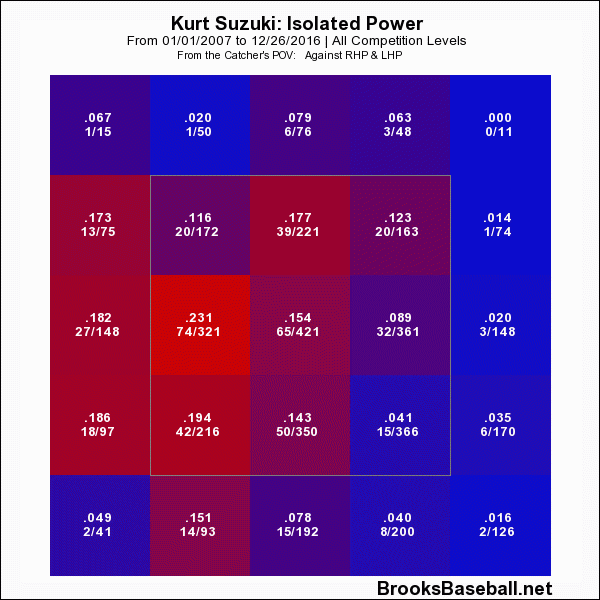
He’s hitting lower pitches for more power than ever. Now see it in action:
He is hitting pitches down in the zone and out over the plate farther than ever before, and it has made Kurt Suzuki into the best HR threat among backup catchers in the game.
Kurt Suzuki, HBP Artist
While it pales in comparison to the home runs when it comes to providing value, Kurt Suzuki has curiously added a new skill – getting hit by pitch. Prior to coming to Atlanta, Suzuki was hit in 1.5% of his career plate appearances, roughly once every 66 trips to the plate. In 2017, he’s been hit 4.4% of the time, once every 23 plate appearances. Suzuki doesn’t walk much, and that has limited his value in past seasons, as he’s not a high batting average guy, but getting hit is as good as a walk, and by connecting with more pitches, literally, he’s helped mitigate that hole in his game.
Kurt has been hit 13 times this season, a career high despite having 9 seasons with more plate appearances. About 6% of Suzuki’s career plate appearances have come in Atlanta, but 16% of his HBP have come here. It’s a significant change, and it might be linked to his new approach in the zone. As Suzuki more aggressively tries to pull pitches over the outside half of the plate, he gives himself less time to react and dodge an errant inside pitch. While that may result in more bruises for Suzuki, it has resulted in significantly more value. The 69 point difference between his BA and OBP is the highest it’s been since 2007, and his walk rate is in line with recent seasons. It’s the HBPs that are making the difference.
Kurt Suzuki’s Historical Accomplishment
Listen, I know there’s a way to make just about any statline historically unique. You slice and dice things enough, and everyone is unique. So I’ll preface this with the acknowledgement that while I don’t think this is a terribly gerrymandered historical search query, it’s at least a step down that path. But here it is.
According to Baseball-Reference’s Play Index, Kurt Suzuki is the only player in MLB history with less than 300 plate appearances, at least 13 HBP, and at least 18 HR in a season. He’s the only player to do it in less than 350 plate appearances, even. Only 3 others have done it in 400 or less: Craig Wilson (2003), Carlos Quentin (2009), and Jung Ho Kang (2016).
Kurt Suzuki is historically unique when it comes to hitting pitches and getting hit by them over a short season, and both seem to stem from a change in his approach. It’s reasonable to think Suzuki could partially maintain this production into next season, and if he does, the $3.5M contract will be more than a bargain for the Atlanta Braves.

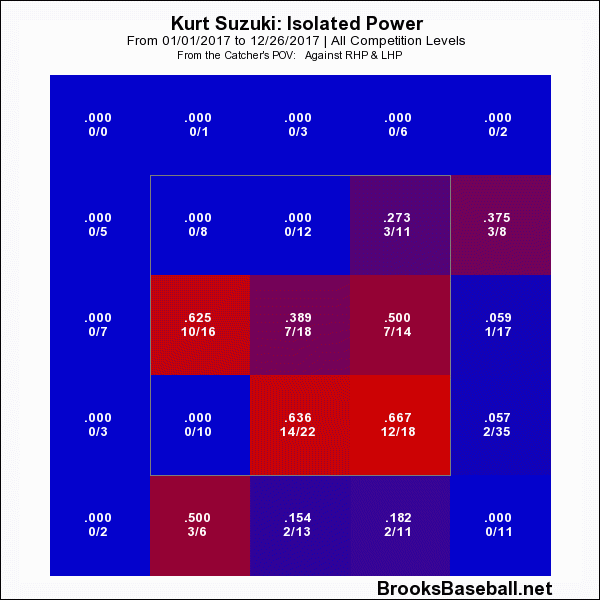
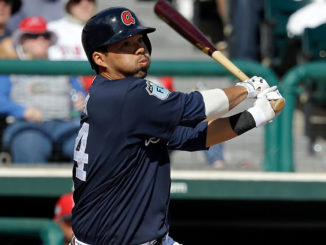
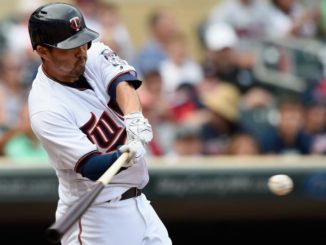
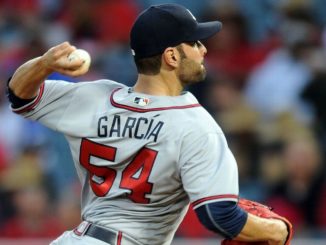
Leave a Reply